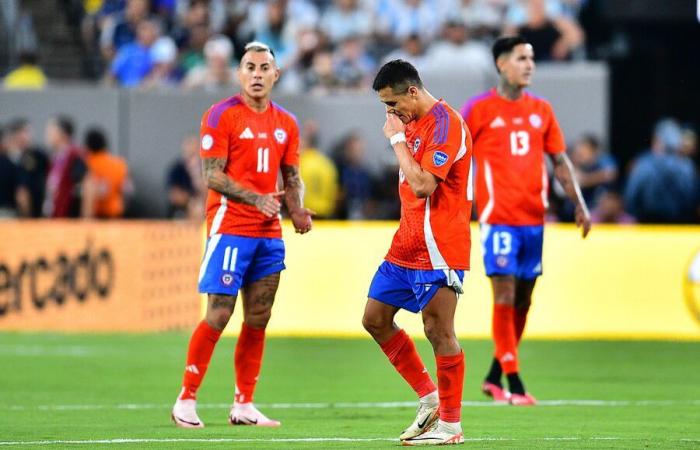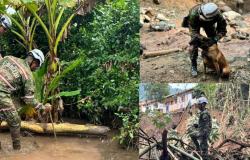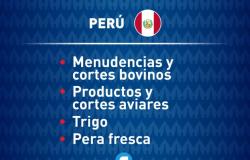The Chilean team put on the overalls. He took out the shovel and the spear to face the world champion, playing as a “visitor” in New Jersey. After the lackluster draw against Peru, Ricardo Gareca’s team needed to recover. Although the game played on Tuesday night was mainly about the Albiceleste, Equality seemed immutable and did not go down badly in La Roja’s accounts facing the definition of group A. But in the end, Lautaro Martínez’s goal ruined the plan. The resistance lasted 88 minutes.
The most lucid fraction of the Team of All came in the second half, when a window opened to attack and a couple of chances were generated that worried goalkeeper Emiliano Martínez who was a privileged spectator of the match. Whether it is a coincidence or not, that passage in which Chile outlined an uprising and landed in the rival field happened after the departure of Alexis Sánchez, who could not redeem himself for his poor performance in his debut. One of the aftertaste that the second Chilean presentation in the United States leaves is whether the presence of the tocopillano may be in danger. Why did La Roja look better without their historic scorer and main offensive weapon?
Through a strategy of making a compact team, closing the rival’s spaces, Ricardo Gareca tried to suppress the Argentine qualities, thinking more about protecting his own goal than thinking about the opponent. The classic 4-2-3-1 of the former coach of Peru transitioned to a defined 4-4-2, mirroring the tactics of Lionel Scaloni, which had Rodrigo De Paul, Alexis Mac Allister, Enzo Fernández and Nicolás González (the latter, replacing Di María) in the middle. The only offensive glimpse of the initial 45′ was an overflow by Isla that ended in controversy due to Romero’s foul on Dávila that referee Andrés Matonte did not sanction. Nothing else.
Both Darío Osorio and Víctor Dávila, the outside players, went to the sacrifice to support the sides and close the wings. Eduardo Vargas went into the clash with the centre-backs, undersupplied, and Alexis Sánchez had no influence on Chile’s game. He tends to go back to get the ball, which he also did against the Peruvians.
The national team went from having control of the ball against Bicolor, with 65% possession, without any effect on offense; to give up the initiative, registering 39% ownership in the 90-odd minutes played with the trans-Andeans. In the first half there was no kick on goal, with 158 successful passes out of a total of 200, and only 18 in the final third (SofaScore data). He almost didn’t attack himself. Argentina’s attacks were effectively quelled by Claudio Bravo, one of the team’s outstanding assets.
At the beginning of the match, the panorama remained relatively the same, with albiceleste supremacy. In the 66th minute, Gareca makes the first change and brings out Alexis Sánchez, for the entry of Marcos Bolados. The entry of the colocolino changes the position of Darío Osorio, who installed on the right wing had been a scarce contribution on offense. More in the center, more appeared. The Wonder Boy, who this Sunday, June 30, formally ends his contract with Inter, had another performance that leaves a sea of doubts. He was the second national player with the most possessions lost against Argentina, with 14, behind the 18 that Osorio recorded.
Sánchez was warned for his warning against Peru and one more yellow card took him out of the duel against Canada. It was assumed that his departure could have had that reason. Nevertheless, Gareca confessed that Alexis’ departure was due to a technical decisiongiving a sort of ‘coup of authority’: “It’s tactical, football.” “Isla couldn’t take it anymore, she asked us for a change. We wanted to give it a little more air with Brereton to clarify a little more in attack. In five, six, ten minutes, a player can change the game,” he added, about the other modifications he made.
“We let go more in the second half, in the first we were more tied,” was another phrase from the Tiger. As El Deportivo knows, Gareca had individual and group talks with the players, to regain confidence after the 0-0 in the debut. He showed them videos of his mistakes against Peru and urged them to recover the level they had been displaying in the previous friendlies against Paraguay, France and Albania.
Sánchez’s departure reorganized Chile and managed to show its best offensive moments on the field. They got loose and found spaces to attack the Argentines. The one who had the clearest chances was Rodrigo Echeverría, one of Gareca’s novelties. The Huracán midfielder justified his ownership with a convincing performance, reflecting in La Roja his good presence in the Globe, where he is a duo with Williams Alarcón. In addition to the two shots that required Emiliano Martínez, he had other notable aspects of the game: 55 touches, 79% of successful passes (27/34), five of 12 duels won and one interception. He looked better than his teammate Erick Pulgar, who again raises questions about his presence from the start.
The truth is that Alexis’ departure also seemed to decompress the team. The Wonder Boy has not managed to achieve a good Copa América, in which he has even argued with his teammates on the field. After the duel against Peru, Pablo Milad, the president of the ANFP, acknowledged the friction. “Maybe there was some discrepancy on the field that is later fixed because it is part of the game.”he declared. “This helps them talk more and have necessary communication.”, stated the top manager of national football, again in a tone that aspires to a conciliatory atmosphere.
At the same time, the manager set goals for the national team. “It is always maturing as a team. This helps us for the qualifiers, which is the most important thing. for us. But we do want to go as high as possible in this championship,” he said, always taking care not to establish specific demands on the squad or the coaching staff led by Ricardo Gareca.
Now it is up to Gareca to redesign the slate for the “final” against Canada, where he needs to win (and for Peru not to defeat Argentina) to qualify for the quarterfinals.






